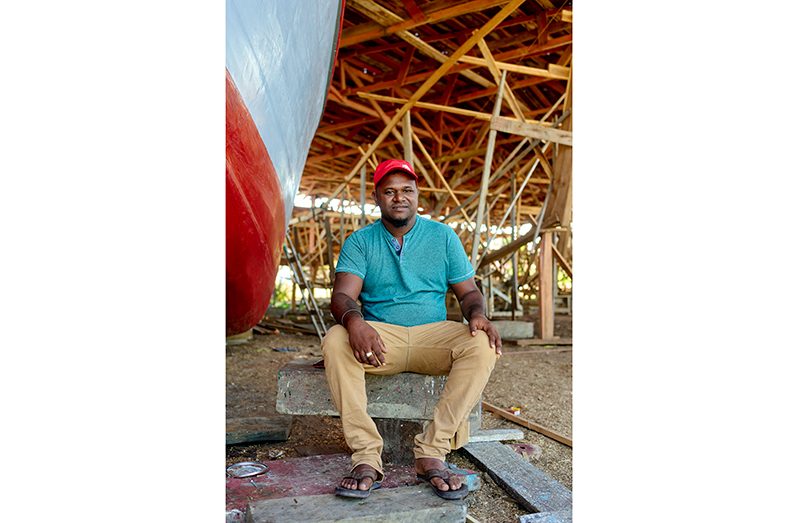The art of boat building in Guyana
EVERY day, as millions of boats set out around the world, many of those are among the lot that leave and return to Guyana’s shores. Diverse and beautiful as they sit upon the lakes, traversing rivers and oceans, they are truly remarkable. Although a simple concept, boats have been integral to the development of Mankind, revolutionising trade and travel. However, the people behind the large seagoing vessels are not often highlighted, particularly in Guyana, where only a few are left. Authentic boatbuilders have been a rarity in recent times.
With the adoption of newer models and types worldwide, old-fashioned handmade boats are not easy to come by. But a family in the Corentyne is dedicated to the age-old craft. As the Pepperpot Magazine set out this week, we ventured to Number 66 village along the Corentyne, where Loukumar Rampersaud and his family have been making boats for generations. Anywhere else, the job may not be as significant. But in the Corentyne, a region known for fishing, boats are pivotal for the livelihoods of many. Every day, fishermen turn to them to build a vessel that can withstand the sea and what it throws at them.
Any day, you could find Loukumar at the Number 66 Village fishing wharf. Home to the Corentyne Fishermen’s Cooperative Society, the location has become a hub of activity, and has evolved to become an important landmark in the community. Most days, the location is filled with hundreds of fishermen operating boats and moving along the river. The boathouse is one of the eye-catching and certainly unique aspects of the site.
Towering several feet, Loukumar and his father have a shed under which they do most of their work. The business has existed for many years, and has been passed down from generation to generation. Twenty-nine-year-old Loukumar has been a part of the family business for as long as he can remember. He spoke of how his childhood was characterised by spending days after school helping his father make wood, and paint countless boats. “I used to come home from school and help my father. And then, as I got bigger, I helped him more, and so until today.”
Number 66 and its surrounding villages are known to be fishing communities, with the 66 fishermen being said to have the freshest catch. Loukumar and his family are among the largest boat suppliers in the region. Oftentimes, the father-son duo works on multiple vessels, cutting various types of wood, and shaping individual vessels. Building a boat is far more complex than one would think. As Loukumar stated, “There are a lot of things we have to do. And making one boat takes like a month-and-a- half.” The more than a month that is spent consists of a long, arduous process that was pioneered and perfected throughout the years.

The process begins with wood. Loukumar explains that most of the wood comes from miles away in Linden. Specific species of wood are required: Greenheart and Wallaba are popular options. Loukumar explains that as the wood is brought to the village and assessed, cutting and marking begin. “We check the wood, and we mark and cut the wood,” he shared. Interestingly, there are different types of boats characterised by designs. These variations of designs make for more than a different look. However, different boats have different functions, and some are more popular options among fishermen. The cruiser is one of the most often requested and seen on the water.
Building something anywhere between 20 to 70 feet in length requires skill. Loukumar and his team have their work cut out for them, as they must be precise in their measurements. After cutting, building is the next step. Aspects such as the boat bow are put together by skillfully connecting flexible but sturdy pieces of wood together. “After we build, we have to sand and paint them,” Loukumar shared. Building a boat is still just a small part of the work. Great emphasis is placed on the strength of the vessel, and it undergoes rigorous testing and maintenance. Every so often, boats are brought to shore for maintenance, similar to cars.
Although a modest profession, Loukumar and his father take great pride in their work, from laying each wood by hand to painting unique designs for each vessel. They see their work as vital, and treat it as such. Although many people see value in more modern vessels, Loukumar sees the importance and quality in their finished product. They certainly play a pivotal role not only in the community, but also in the entire fishing industry of Corentyne. With hundreds of fishermen turning to them, Loukumar says they are as important to the fishermen as they are to the community. As he stated, “We are very important to the fishermen. Without us, they do not have a boat, and without a boat, they cannot fish.”



.jpg)









